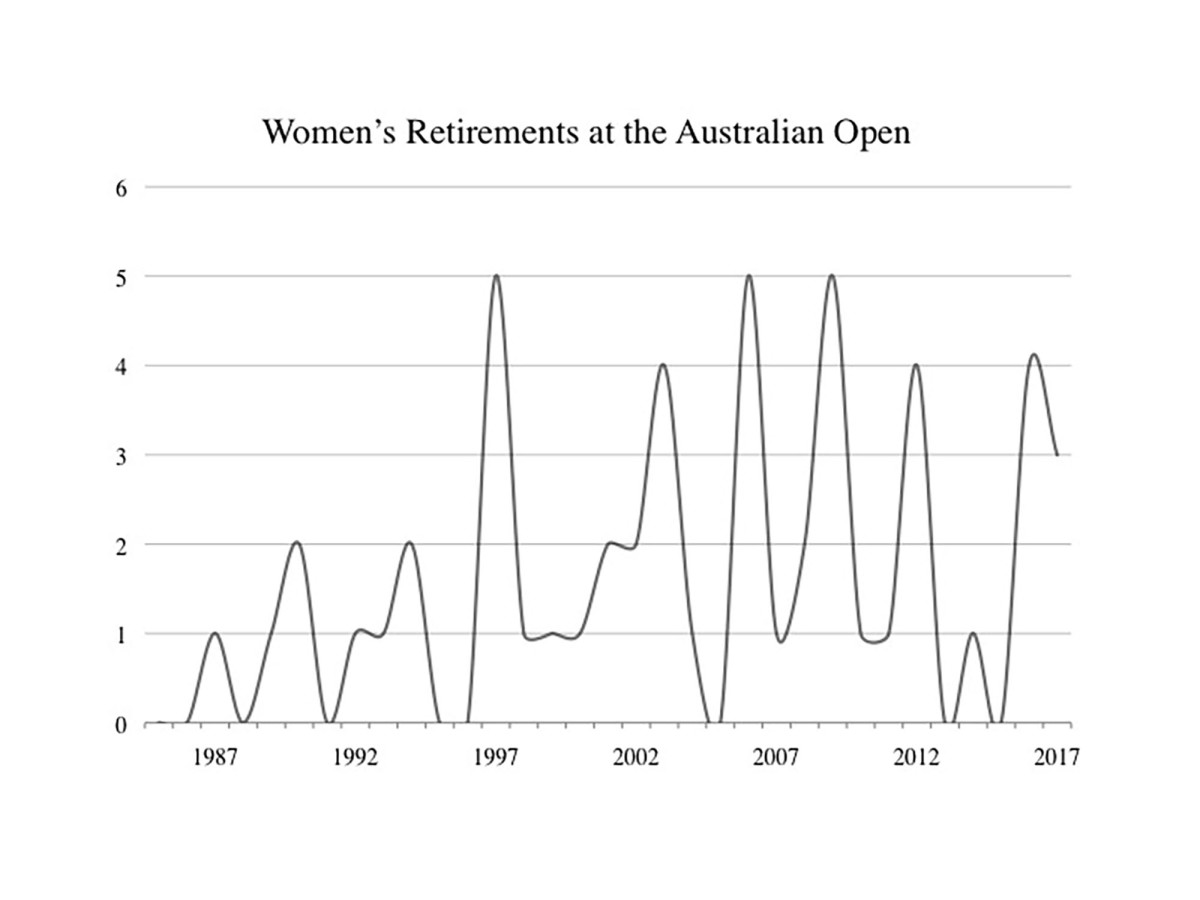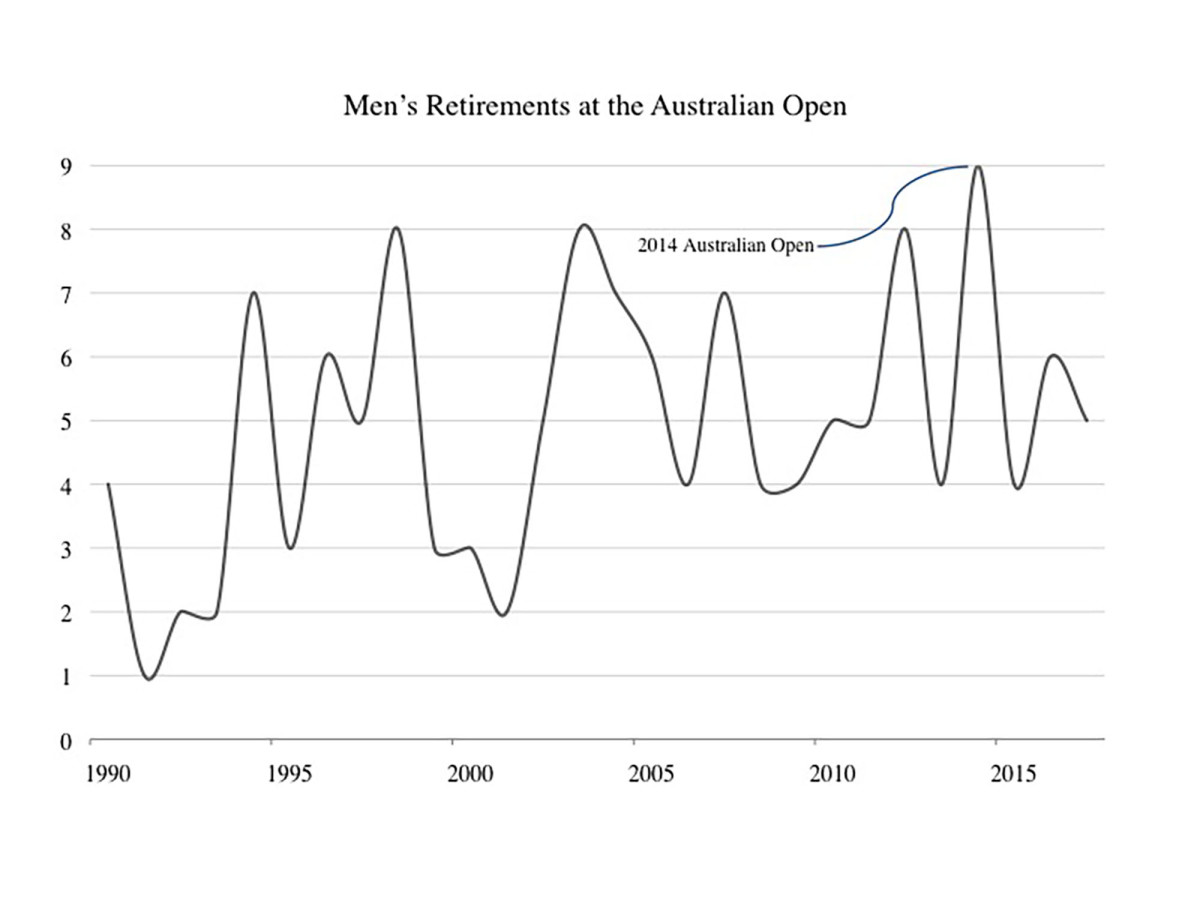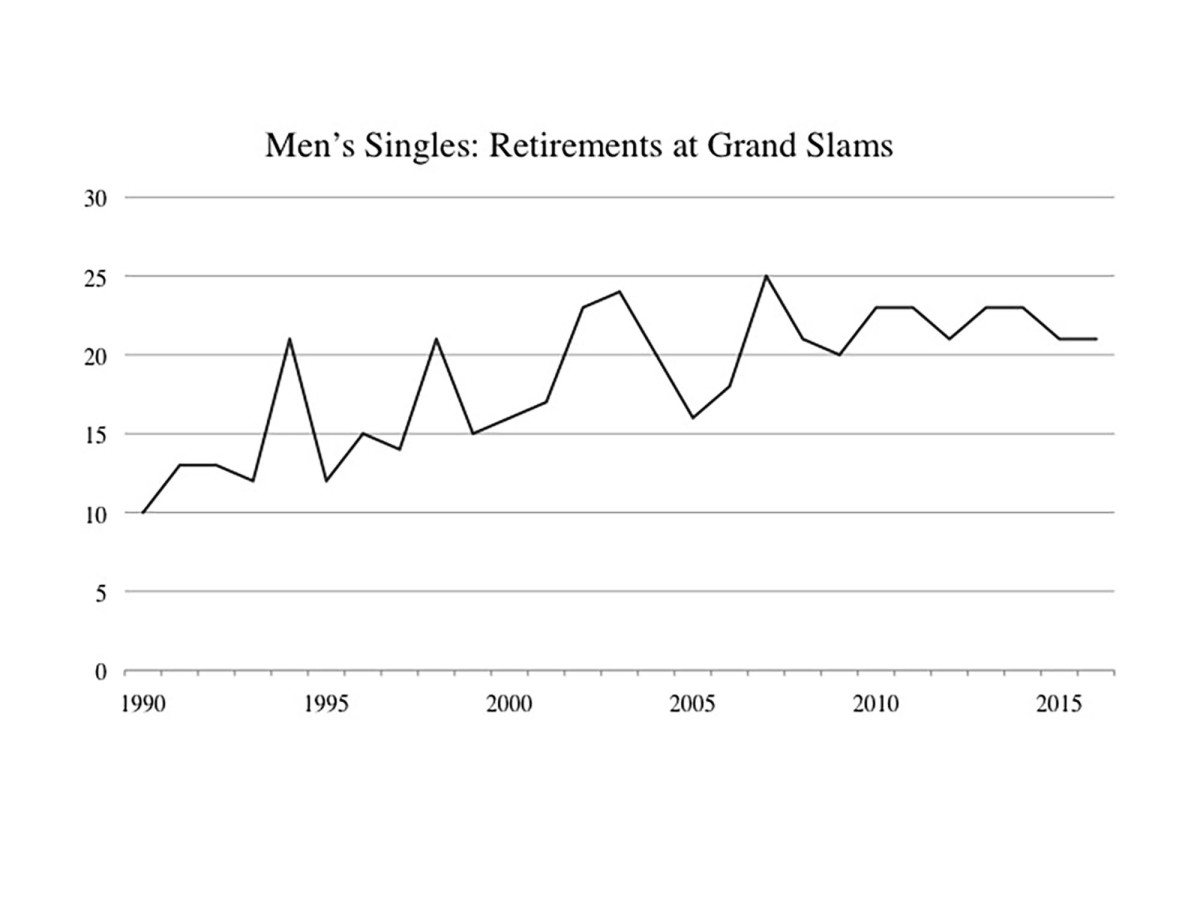Rise in retirements at the Australian Open and how it relates to injuries it today's game

Through five days of play at the 2017 Australian Open, we’ve seen eight retirements so far: five on the men’s side and three on the women’s side. While they’re not abnormally high numbers, they fall into a larger trend of increasing retirements at Grand Slams.
The number of retirements at Grand Slams between 2010 and 2015 is 37% higher than it was in between the years of 1995 and 2000. And at this year’s Australian Open, the number of men’s retirements (five so far) is slightly above the yearly average, 4.8. Women’s retirements also passed the average of 2.8 this year, with three thus far. Outlying factors like weather conditions play into retirements, but juxtaposing retirement trends with the rising number of injuries we see on the tour makes these numbers hard to ignore.
Praise for Denis Istomin, plus more thoughts on Australian Open Day 5
Since the early 2000s, the average number of Grand Slam matches that end with retirement in the first set is up from about one match per year to two-and-a-half per year. In the first round in Melbourne, Nicolas Almagro retired after just four games and 23 minutes in his match against Jeremy Chardy.


The Australian Open is not the hotbed of tennis retirements. That honor unsurprisingly goes to the U.S. Open. On the men’s side, for example, there have been 159 retirements from the main draw since 1990; there have been 132 retirements at the Australian Open and 92 at Wimbledon.

Because the Australian Open is the first major of the season, the rise in retirements—coupled with the frequency of injuries—does raise some red flags. With Madison Keys, Sloane Stephens, and Thanasi Kokkinakis, to name a few, bowing out of the swing down under, and nearly every contender battling some sort of nagging injury, I wonder what’s being done in training and recovery to combat this and what the WTA and ATP might implement to deal with this issue. Of course, injuries are ubiquitous in elite sporting events, but at what point does a governing body step in to address a trend? When everyone is hurt, and athletes don’t get paid from their organization unless they’re competing, more athletes will tough it out while injured or show up to take spots and prize money from fellow athletes.
These numbers might fall into the pocket of WTA Director Steve Simon as he continues with his plans to curtail match times. As the debate over best of five matches at Slams for the men heats up, ATP leaders should also weigh in. Other discussions include no-ad scoring, let serves and time clocks in between points.
Fans, players and sport leaders want to see the top brass of the sport showing up as injury-free as possible, as often as possible. With a rising number of retirements and a roster of top names missing from recent Grand Slams, will tennis address the problem?
